Tecsee Middle Switch Review by ThereminGoat
Here is the review of Tecsee Middle Switch by ThereminGoat. Since the Tecsee Middle Switch was in the market last year, there are few comprehensive reviews and conversations about the switch. Eventually, ThereminGoat decided to do a review for it. We quote the basic part of the Middle switch, if you want to read the whole articles, please kindly read his origianl article here.
Note: This review will specifically be covering the tactile variant of the Tecsee Middle switches. Any references made to the linear variants throughout this review will be explicitly stated in the text and thus any ambiguous statements should be assumed to reference the tactile versions.
Appearance
At the highest level, which isn’t all that high, the Tecsee Middle switches come in a translucent, semi-yellowish color similar to that of what Gazzew Boba U4 switches take on with age. Obviously as can be seen above in Figure 8, these switches sit substantially lower than traditional, MX-style switches, though the bulk of the total height is centered in the bottom housings which don’t appear drastically shorter. The nearly pancake-flat top housings, though, are quite a bit shorter than traditional switches, and even the dustproof style stems of the Middle switches don’t protrude out all that far. Tactile variants of the Middle switches have slightly more opaque, cheese-yellow colored stems and the linear variants come in opaque white stems. Aside from differences in their push feeling and stem color, both tactile and linear Middle switches have bottom out forces marketed at 63.5 grams and an identical 2.2 mm full travel distance. Further points of intrigue regarding the design of these switches may be found in the paragraphs below in the part by part breakdown.

Figure 10: Tecsee Middle Switch Tactile switches and their components.
Coming first to the top housings of the Tecsee Middle switches, we are presented with an extremely flattened exterior that is both substantially lower in volume and general angularity as compared to conventional designs. For the lack of space to put features, though, Tecsee really did pack the features in as the housings carry Tecsee’s OEM, stylized logo nameplate as well as full length, thin rectangular through-switch LED/diode slot that has a centered circular indentation for round LED support. They even feature the four gaps just above the bottom housing attachment legs as is common in other switches but otherwise not noted in previous reviews here. One thing worth mentioning regarding the exterior design of these switches is that they initially appeared to have stem holes which were slightly larger and more square upon first inspection. As the ‘Measurements’ section below has borne out, this actually appears to be true with the stem holes in the Tecsee Middle switches being 7.87 mm x 6.34 mm as opposed to a traditional MX-style switch which has an (375 switch) average hole size of 7.64 mm x 6.03 mm. Internally, the housings appear extremely similar to other Tecsee releases and don’t feature anything drastically different in terms of their functionality. The only point of note is the lone, single digit number mold marking on the rim just inside of the rectangular LED/diode slot on the top housings.
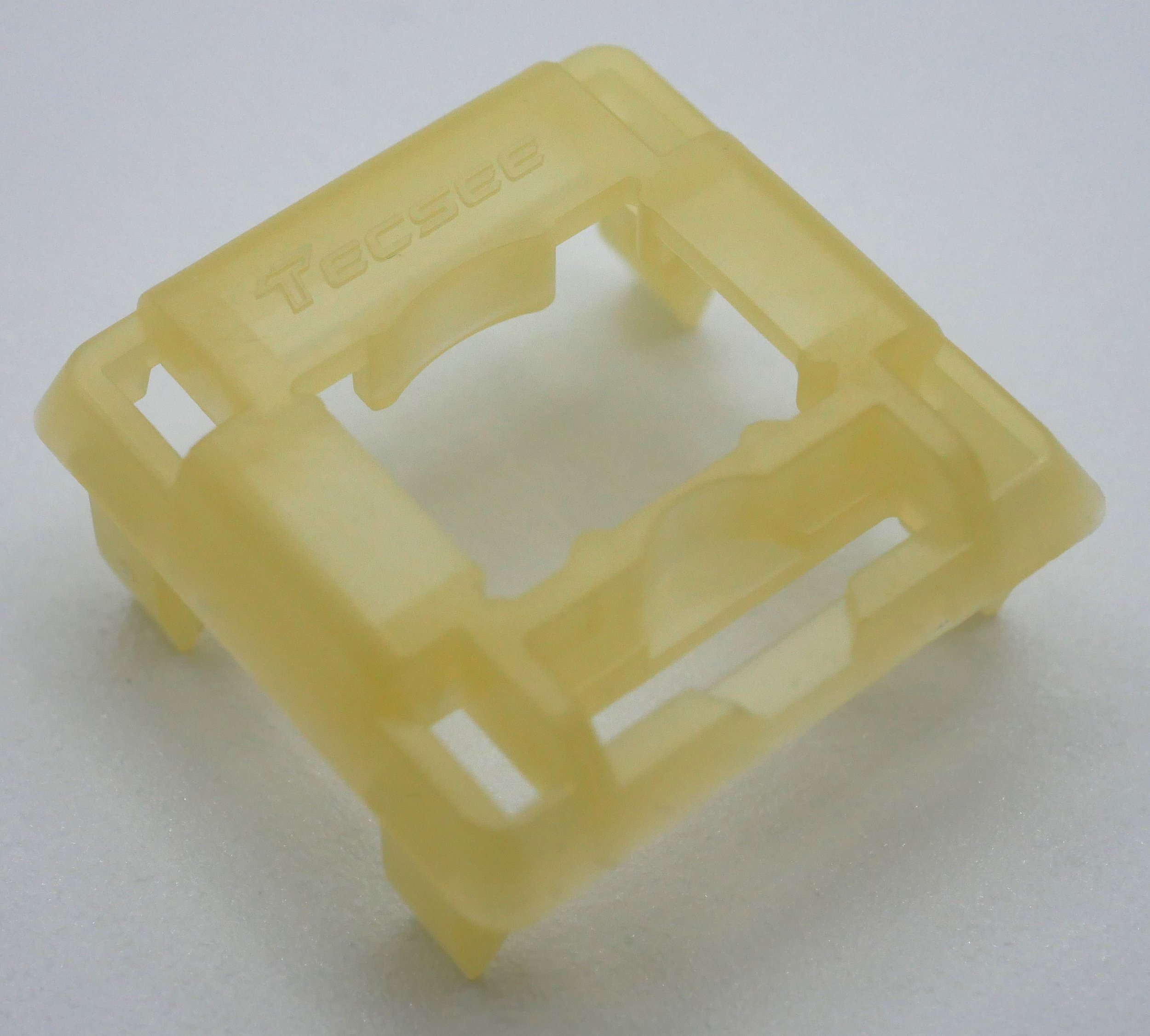
Figure 11: Tecsee Middle Switch top housing exterior design showing flat overall profile, Tecsee nameplate, and large, slightly more square stem hole.
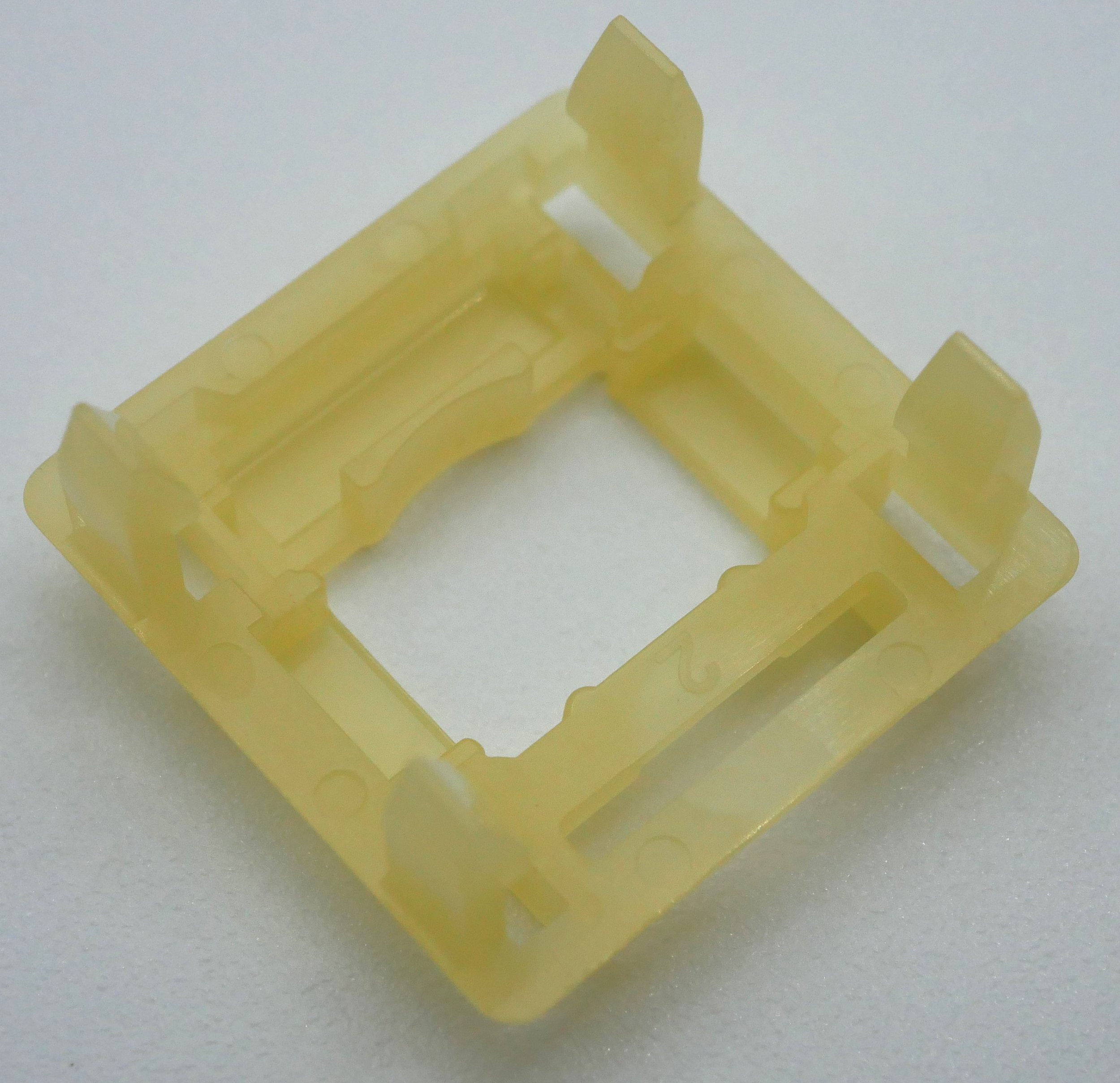
Figure 12: Tecsee Middle Switch top housing interior design showing general similarities in structure and mold markings to existing, normal sized Tecsee switches.
Moving next to the stems and springs of the Tecsee Middle switches, I was immediately taken aback by just how hilariously adorable these two components were. All the features commonly associated with stems and springs that I beat to death in this section week in and out just so happen to appear here, but in a mini-me like fashion. Even a thin application of factory lube is present but hard to photograph on the slider rail sides of the Tecsee Middle stems. The stems, in their full 9.78 mm glory, pull up just short of the (375 switch) MX-stem length average 13.04 mm but still feature squared off slide rails, a tiered center pole, and even mold ejector markings in the base of the keycap stem mounting post. For all intents and purposes these are just normal stems which have been shrunk vertically by about 25-30%. The springs also pull up adorably short at about 11.75 mm in total length while still featuring normal and consistent threading throughout their length.

Figure 13: Tecsee Middle Switch Tactile stems and springs showing shortened but expected features including non-tapered slider rails, tiered center poles, and normal spring threading.
Arriving at the bottom housings of the Tecsee Middle switches, we’re greeted with a design and overall size that is much more in line with traditional MX-style housings. As was stated at the onset of this section, the bulk of the size of the Tecsee Middle switches comes in their bottom housings, and a large portion of that is assumed to be due to the leaf structure not being altered in the slightest. Rather than attempting to adopt a Kailh Box-like compact leaf design, Tecsee appears to just have made a smaller overall leaf that doesn’t protrude out from the bottom housings all that much. Otherwise, their internal design is more or less in line with other Tecsee releases, featuring a small south-side spring collar and some friction-reducing vertical ribbing in the slider rail guides. Externally, both tactile and linear Tecsee Middle come only in PCB mount design with normal, common MX-compatible PCB pin outs. In addition to a completely wide open LED/diode slot, the other design feature worth mentioning externally is that of the ‘stacked’ mold marking configuration. Located upside down in the flatter region between the two metal PCB pins, the Middle switches feature a single capital letter directly over top of a single digit number mold marking, something which has not been covered previously in any review on this website.
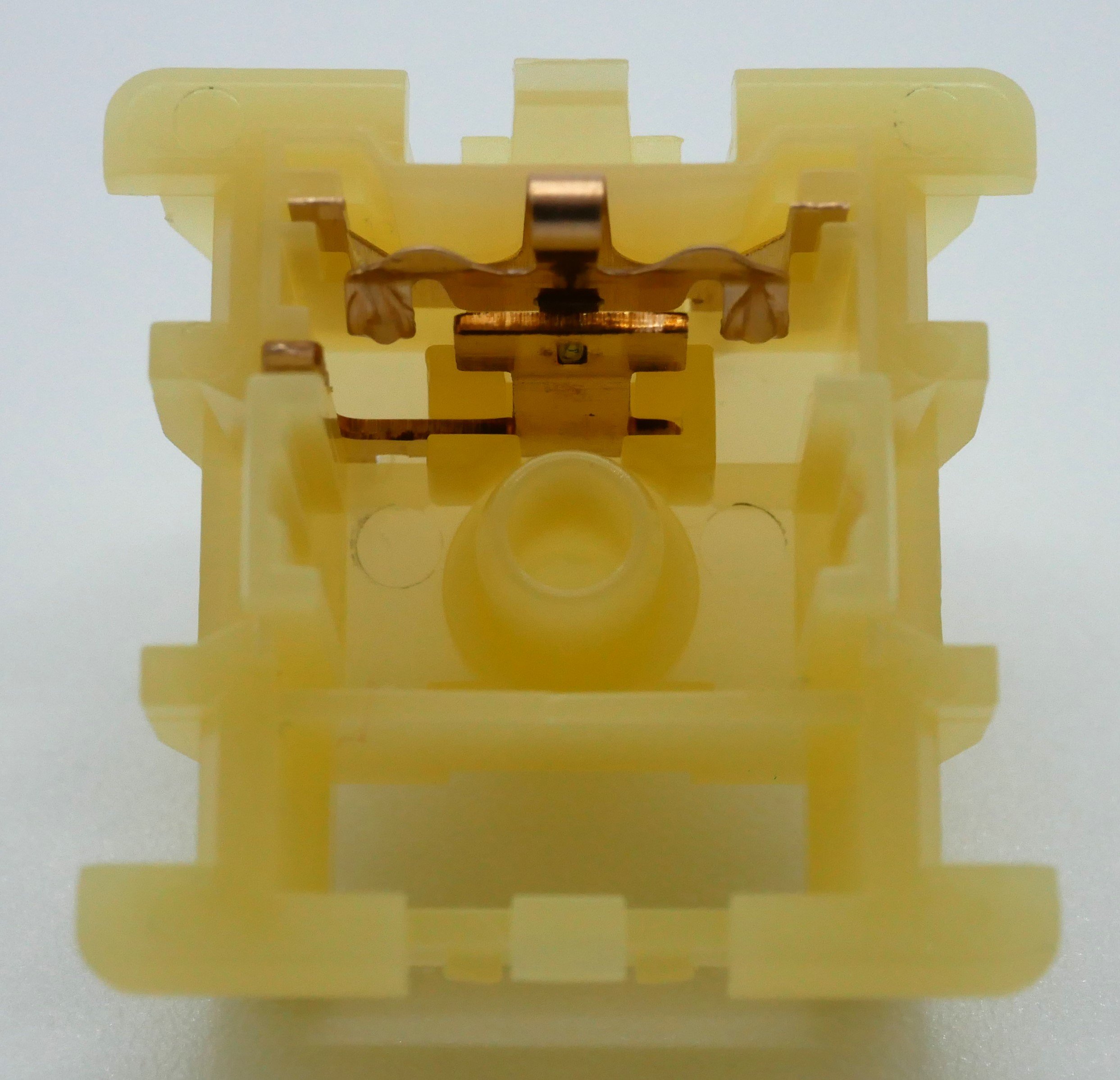
Figure 14: Tecsee Middle Switch bottom housing interior showing subtle presence of factory lubing, ribbed slider rails, and mold ejector circles in base of the housing in line with traditional bottom housing structures.

Figure 15: Tecsee Middle Switch bottom housing exterior design showing PCB mounting pins and two-tier, single letter and single number mold marking between PCB mounting pins.
Push Feel
For being a miniature version of a normal, MX-style tactile switch, these Tecsee Middle switches still find a way to pack in all of the features that would be expected of their full scale counterparts. First and most importantly, the tactile bumps of the Middles are located right at the very start of their short throw stroke length and pack a bit more of a quick and punchy response to them than their force curve would lead you to believe. There’s virtually no noticeable linear pretravel leading up to the tactile bumps in these switches, either, which gives them that ‘right off the bat’ style of tactility which has become the predominant favorite in the western community in recent years. In addition to the lack of linear pretravel feeling, the Middles have almost no noticeable lag in the linear post-bump region that stretches from 1.4 mm to 2.6 mm of displacement, which constitutes a large portion of this switch’s overall stroke. While some part of this is due to the strength of the tactile bump preceding it, an equally valid argument could be made that it is the factory lube applied to the slider rails of the stems which makes post-bump linear glide possible. Unfortunately, though, this factory lube does not prevent the actual bumps, themselves, from escaping a scratchy, leathery like feeling that happens without an adequate amount of factory lube applied between the point of contact with the stem legs and the leaves. As for the housing collisions, these switches are predominantly underpinned by a deep, larger-than-tactile-bump feeling bottom out that sort of ‘swallows up’ the end of the stroke of these switches. Topping out, on the other hand, is hardly as noticeable due to its similar strength and proximity to the tactile bumps which give these switches their character.
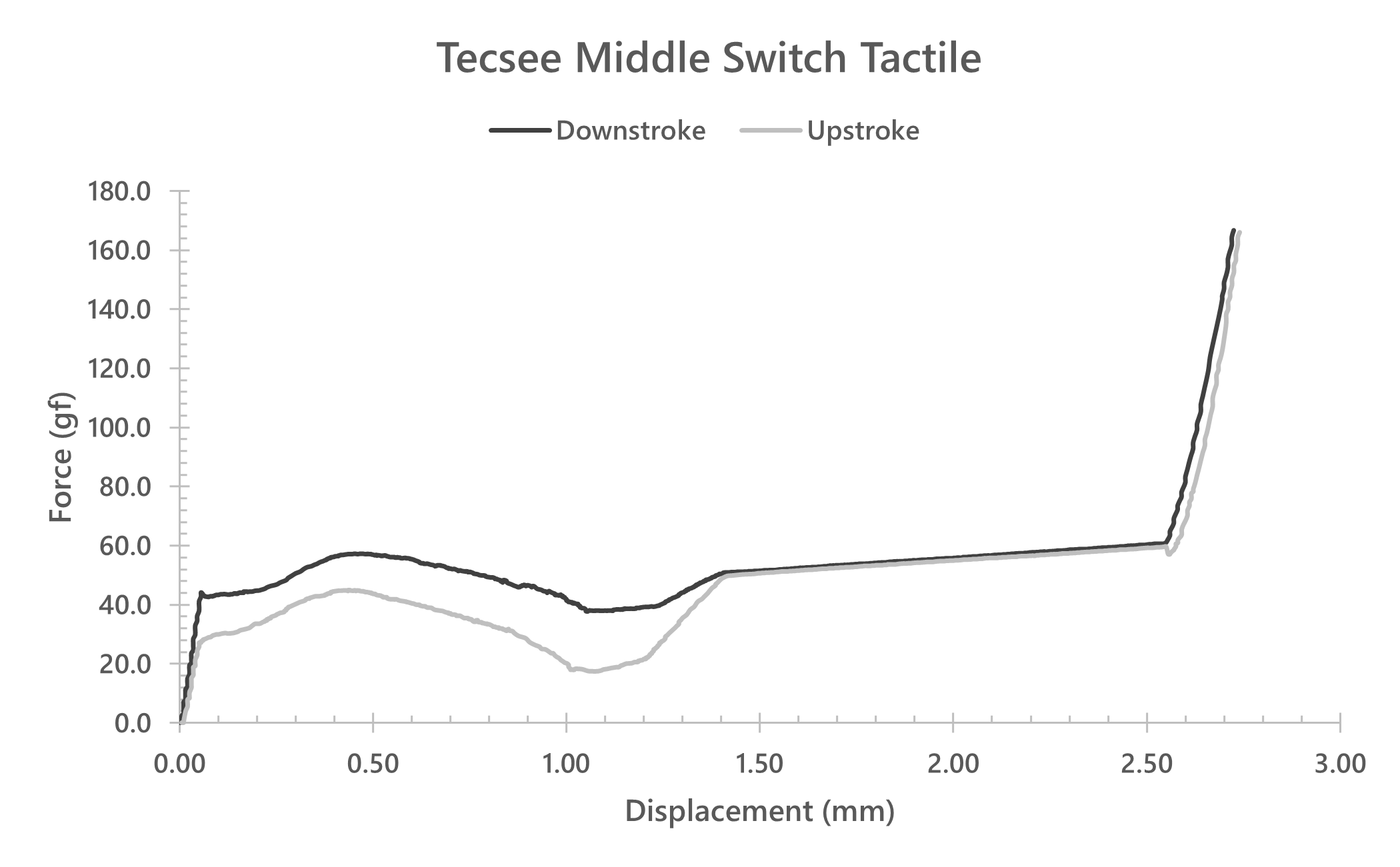
Figure 16: Tecsee Middle Switch Tactile force curve diagram.
With all of that being said about the Tecsee Middle Switch tactiles, though, there is a fair bit of discussion that should be given as to their switch to switch variability. A good majority of the metrics discussed above, including smoothness, bump strength, and especially bottom out strength, all have slightly higher than average switch to switch variation. I wouldn’t say that it is necessarily so much so that these switches need cherry picked or else you’ll have a wildly different key to key feeling, but I could imagine a good few people seriously wanting to make these work in their endgame boards having to do just that. While it is obviously hard to attempt to quantify this variability on any of these metrics, stock switch force curve comparisons at least demonstrate a pretty substantial amount of variability when it comes to bottoming out location and feeling. Looking at the force curve comparison chart below in Figure 17, you can see that the bottoming out of three randomly selected Tecsee Middle Switch tactiles could be anywhere within a broad 0.1 mm range and have odd inflections in force that does not appear to be consistent nor able to be predicted. As I stressed above, this likely won’t make you have to cherry pick these switches out of the bag, but it is still worth mentioning as I very rarely have been able to demonstrate switch-to-switch functional variability as well as I can here.
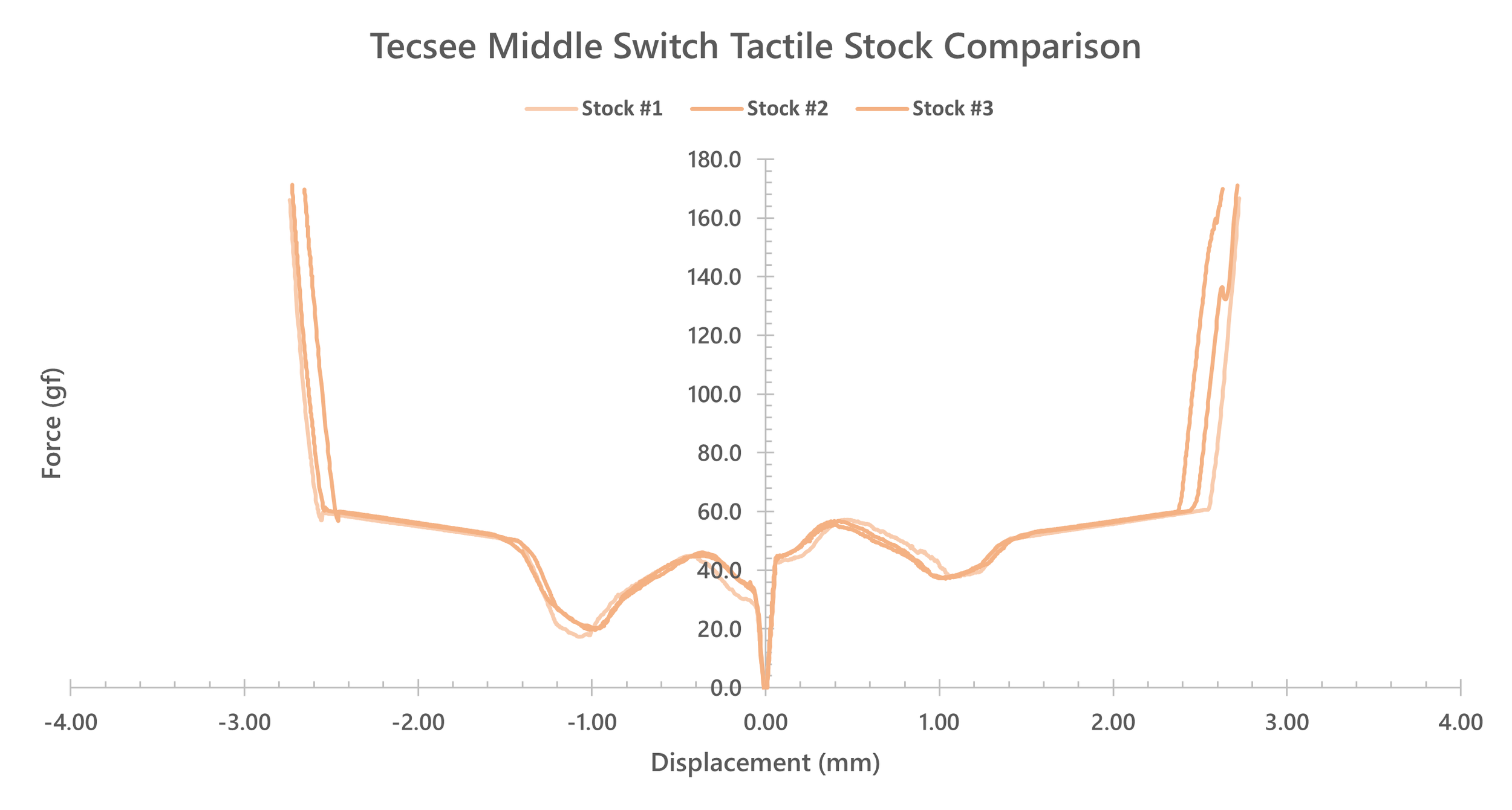
Figure 17: Tecsee Middle Switch Tactile multiple stock switch force curve comparison.
Sound
The overall sound of the Tecsee Middle switch tactiles is a bit less attractive than their overall push feeling notes above, and in no small part due to that line about leathery scratch introduced at the point of the tactile bump. While these switches are overall on the softer end of the spectrum and don’t carry much volume to their sound, what little sound is present is almost entirely made up of a slightly snappy, leathery raking of the stem legs over the leaves of the switch. Even though there is some subtle undertones to the overall sound profile of these switches which is granted by that gaping, swallowing-of-the-stem bottoming out, it doesn’t do much to mask the scratchy tones from the tactile bumps. There’s really not much else to the sound of these switches though, surprisingly. There’s no input from the linear post-bump region nor the topping out, the latter of which is due to the proximity of such to the tactile bump that is making the majority of said sound. Could the overall tone of these switches and their scratch-forward tones be a bit dampened with that factory lube between the leaves and stems mentioned above? Sure, I don’t see why it wouldn’t. However, I would be a bit more wary in making aftermarket modifications to these switches as opposed to any other standard MX-style switch purely because of the shrunken size of the leaves, which may make it even harder to attempt to lube that point of contact without accidentally gumming it up and ruining the switch entirely.
Wobble
Even with the obviously newer molds required to make these stems and top housings, the Tecsee Middle switches have a fairly standard amount of N/S and E/W stem wobble for a modern, recently made Tecsee switch. Just a hair more present in the N/S than E/W directions, the stem wobble isn’t enough to likely bother most users but may be a problem for some more susceptible to it. As well, I think it is worth mentioning that I don’t think this stem wobble is necessarily a result of the increased dimensions in the stem hole in the top housings either. As compared to standard switch measurements, the stems also seem slightly more proportionally matching to these increased dimensions.
Final Conclusions
At the end of it all, I must say that I am simultaneously impressed with and disappointed by the execution of the Tecsee Middle switches. On the impressed end of things, one which is more context-inclusive and wholistic regarding the current state of mechanical keyboard switches, I can’t help but recognize how unique these switches are amidst their peers. As brands and manufacturers have continued to try and push low profile switch formats with low custom community compatibility, we have yet to see any real champion take on the throne that has been capped by Kailh’s Choc style. Rather than trying to push yet another standard into the format, Tecsee has clearly attempted to circumnavigate their way to the top by meeting demands of low profile switches while still keeping with the widely accepted MX-style pin outs and keycap mounts that the custom community has adopted as the standard for well over a decade now. Doing so with brand new sets of molds and a decently innovative shift in the size and structuring of internal components, it was a bit initially surprising that these haven’t gotten more recognition from the community at large in the past year of their existence. That being said, though, my disappointment stems from the fact that that lack of recognition and celebration is completely understandable after having tested out these switches in hand. While unique in their shape and execution, the Tecsee Middle switches are still lacking some single switch and batch-wide quality control to really home in on what makes any keyboard switch great, let alone ones which could fill a niche design market. If Tecsee could improve upon their factory lubrication and switch to switch variability, I could very well see this style being among the more dominant choices amidst a growing field of low profile switches in the years to come. However these Tecsee Middle switches and/or the low(er) switch profile that they provide pan out, though, know well that it will have to come by way of the action or inaction of Tecsee themselves. The opportunity is there.


